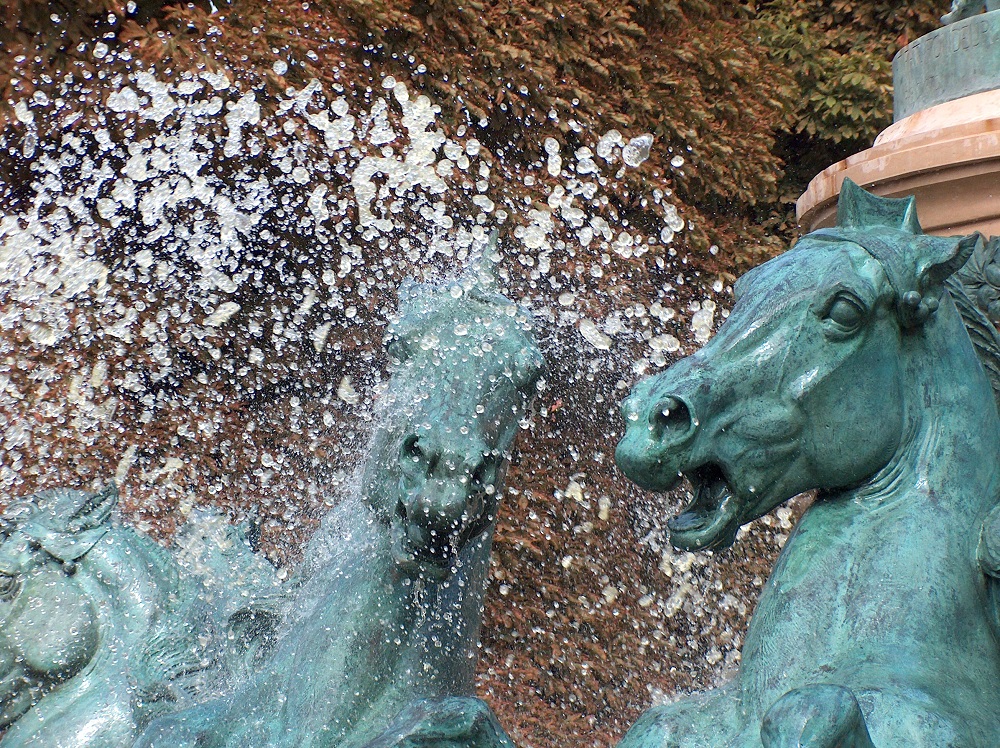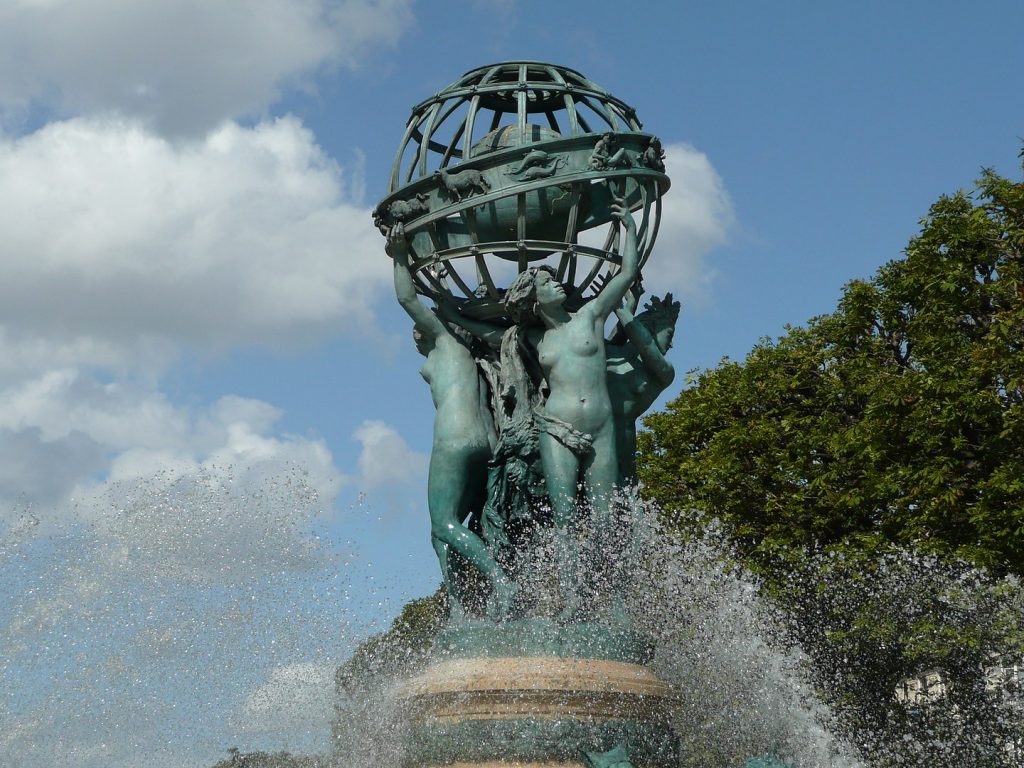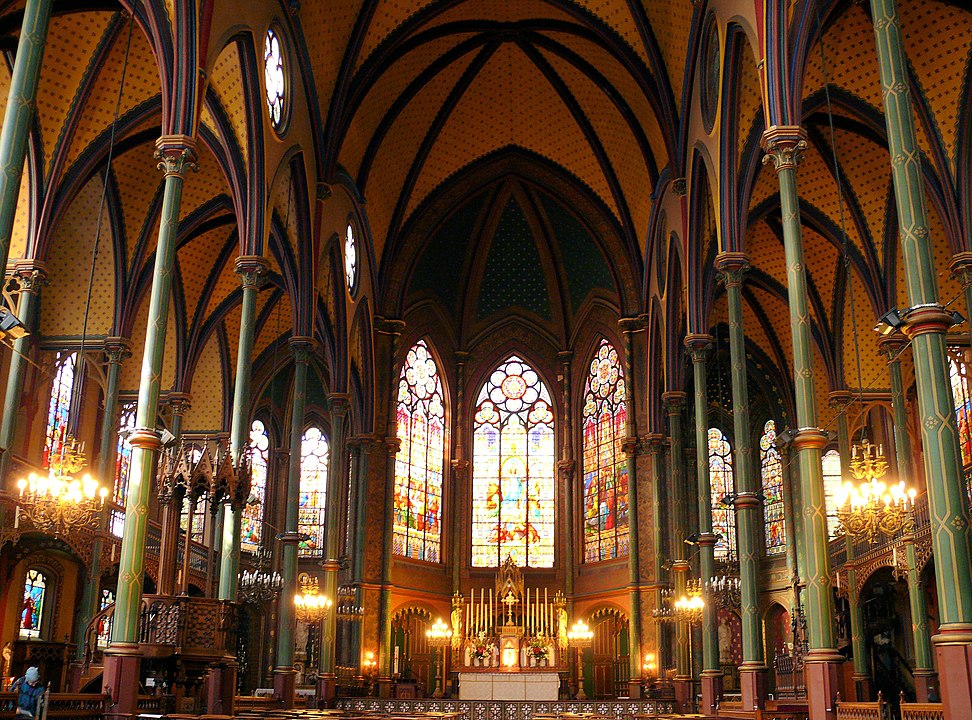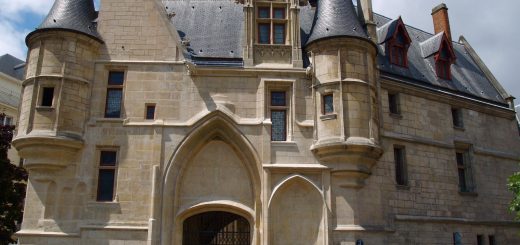Fountain of the Four-Parts-of-the-World
Jardin des grands explorateurs, 75006 Paris
Creation : between 1867 and 1874
The Jardin des Grands Explorateurs creates a perspective towards the Luxembourg Palace. At its entrance is one of the most beautiful fountains in Paris, the fontaine des quatre parties du monde (fountain of the four parts of the world). If we examine it closely, we can see that the sculptor Jean-Baptiste Carpeaux hid a message about slavery in it.

A collective work
The monumental fountains multiply in Paris in the middle of the 19th century, under the Second Empire. The organization is almost always the same: the architect Gabriel Davioud acts as conductor, he is one of Haussmann’s essential architects, especially for all hydraulic works. Then a collective of sculptors take care of the realization.

The basin and its many animals are thus the work of Emmanuel Frémiet. The celestial sphere recognizable by the twelve signs of the zodiac is by Eugène Legrain. It is a reference to the Paris observatory which is located a few meters away. But the most remarkable part of the fountain is the group of four women who carry the sphere, sculpted by Jean-Baptiste Carpeaux. They each represent a part of the world: Asia, America, Europe and Africa.
Carpeaux, a free sculptor
Jean-Baptiste Carpeaux is a personality apart in the landscape of the 19th century. One of his works illustrates this very well: the group representing the Danse for the main facade of the Opéra Garnier. He was asked for a group of three characters, he made six. A classical composition was expected from him, he created a work full of movement and expressiveness. The bodies are represented in a realistic style and not idealized (which is all the more scandalous, since these real bodies are at the height of a man, and even a woman). He was asked to start over, he refused.
Photos : Marie-Lan Nguyen / Jastrow ; Public Domain
A hidden message
We find this dynamic and realistic style in the fountain of the four parts of the world. The four allegories do not just carry the sphere, they animate it, and effectively give it a rotational movement. Each is in a different posture corresponding to this movement of round.

This is the last work of Jean-Baptiste Carpeaux and he could not be satisfied with leaving us a beautiful fountain. When we look closely at the group, one detail calls out to us: Africa has a broken chain at its ankle. A clear allusion to slavery which was officially abolished in many countries in previous years (1848 in France, 1865 in the United States).

However, the abolition movement is far from complete. Carpeaux recalls it in his own way since the chain is not free. America has its foot in it. When the monument was inaugurated in 1874, slavery remained in force in many countries. Brazil in particular, a large slaveholding bastion, did not abolish it until 1888.
We know that this is an important theme for the sculptor. Another of his works is derived from the figure of Africa. This is the bust below, the title of which is “Why be born a slave?” ”(A plaster version is kept at the Petit Palais).










The fountains in Paris are like little works of art. Although not that little in fact 🙂